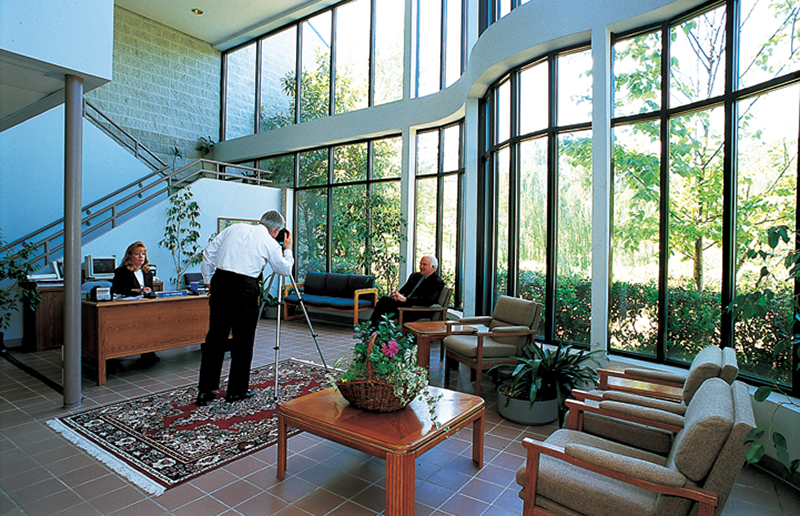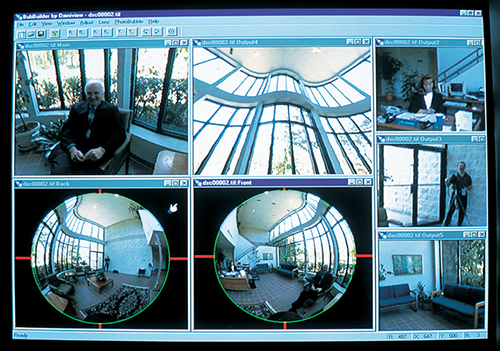
Spherical Camera
Everyone likes to get the complete picture. But for Interactive Pictures Corporation (IPC) of Knoxville, Tennessee the whole scene is a panoramic 360-degrees and looking at four views at once.
The interactive imaging technology, called IPIX™, was developed largely as a result of a Small Business Innovation Research (SBIR) contract through Langley Research Center. NASA found the technology appropriate for use in guiding space robots, in the space shuttle and space station programs, as well as research in cryogenic wind tunnels and for remote docking of spacecraft.
An innovative imaging process, IPIX provides for real-time control of live video data. Viewers can look in one direction from a single vantage point or four views simultaneously.
IPIX technology relies on digital image manipulation of a standard video signal. This permits independent panning, tilting, zooming and rotating of four video images. It requires no moving parts, is noiseless, and responds faster than the blink of an eye. Key elements are a high resolution charge coupled device (CCD), image correction circuitry and a microcomputer for image processing.
A further development of the IPIX technology is spherical photography. A digital camera or standard 35mm camera fitted to a fisheye lens is required. Images taken are processed and electronically scanned to create a digital file. Once digitized, a single fisheye shot captures a hemisphere, while two opposing shots provide an entire sphere. Using seaming tools, the two opposing shots are fused without a discernible seam.
Images of any location are captured in their entirety in a 360-degree immersive digital representation. The viewer is positioned inside the 360-degree digital image and can navigate to any desired direction within the image via a computer mouse, joystick, or other input device. Any part of the image can be enlarged for detailed exploration.
Potential applications of IPIX technology include the viewing of homes for sale, hotel accommodations, museum sites, news events, and sport stadiums. Several car manufacturers already use IPIX to give a viewer a behind-the-steering wheel look at their latest line up of automobiles.
Uses of IPIX technology are far reaching. One application is for non-invasive surgeries. By implementing OmniScope™, also developed by IPC, surgeons can look more closely at various parts of an organ with medical viewing instruments now in use.
OmniScope allows the surgeon to see more without repositioning the camera all the time, says Daniel Kuban, chief operating officer of IPC. "The OmniScope becomes an extension of the surgeon's eyes. It frees the surgeon to focus on the operation," Kuban comments.
An OmniScope benefit to the surgeon is post-operation evaluation of any aspect of the surgical area in detail because a wide-angle, digital image has been captured.
IPIX technology means that tiny cameras that can see a whole room, could revolutionize the security and surveillance industry. In addition, teleconferencing, virtual reality and telepresence theme parks, and a host of military operations are among the applications for this imaginative technology.
IPIX and OmniScope are trademarks of Interactive Pictures Corporation.

Once the two images are joined, users can select sections of the sphere and zoom in on desired areas. The technology is finding applications in real estate sales, surgery and museum sites.

Based on NASA Small Business Innovation Research contracts, interactive imaging technology by IPIX combines two images from 180 degree perspectives into a sphere. Dr. Lee Martin of IPIX captures the images digitally.













